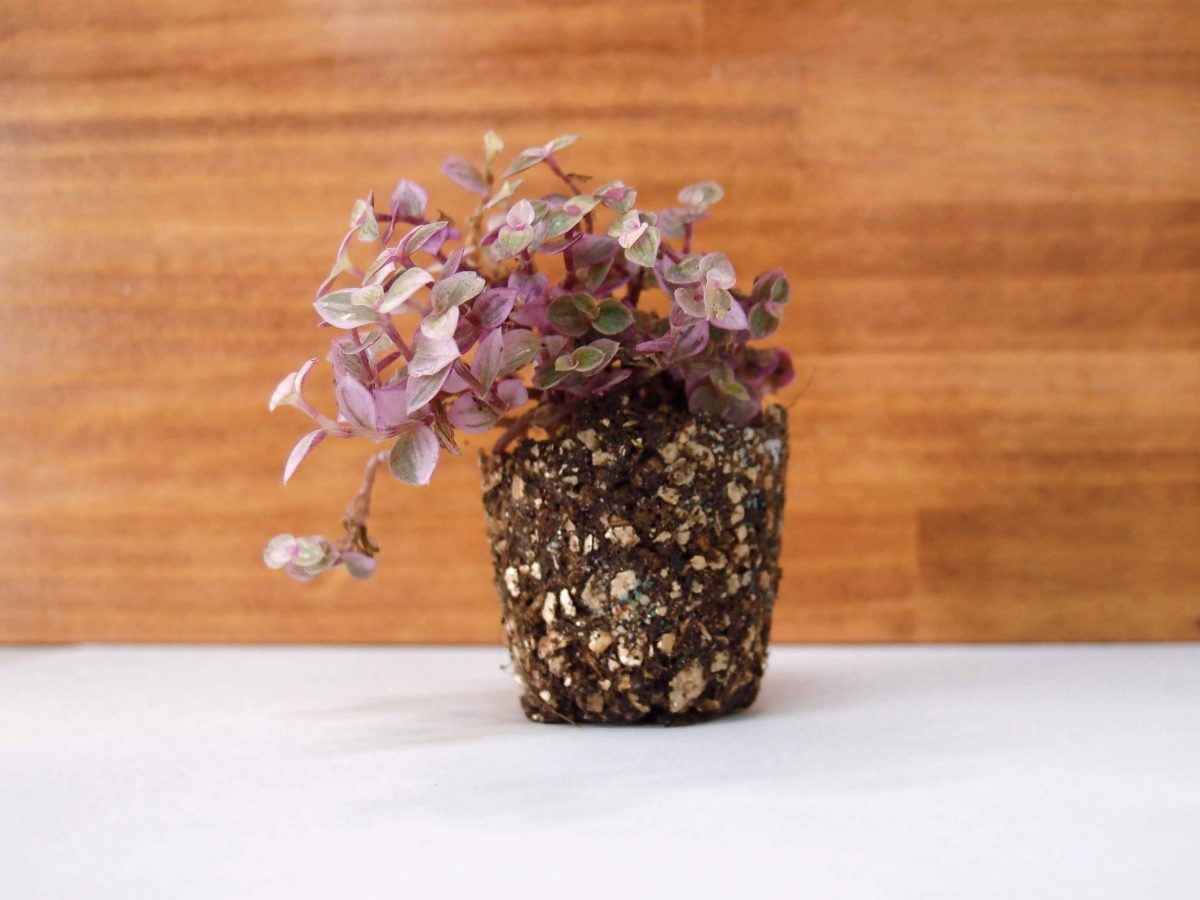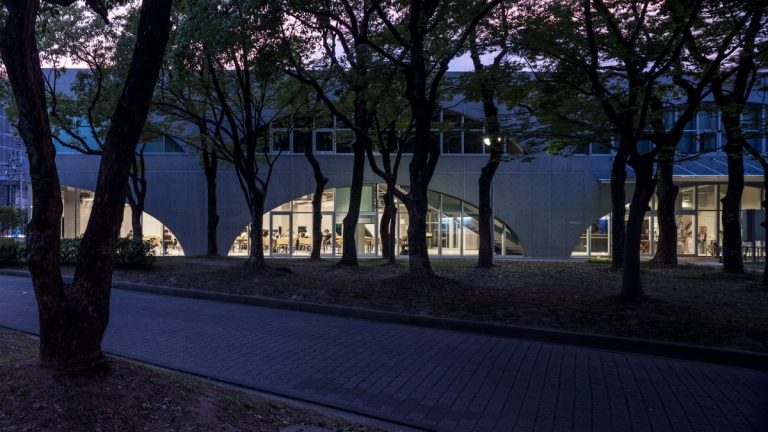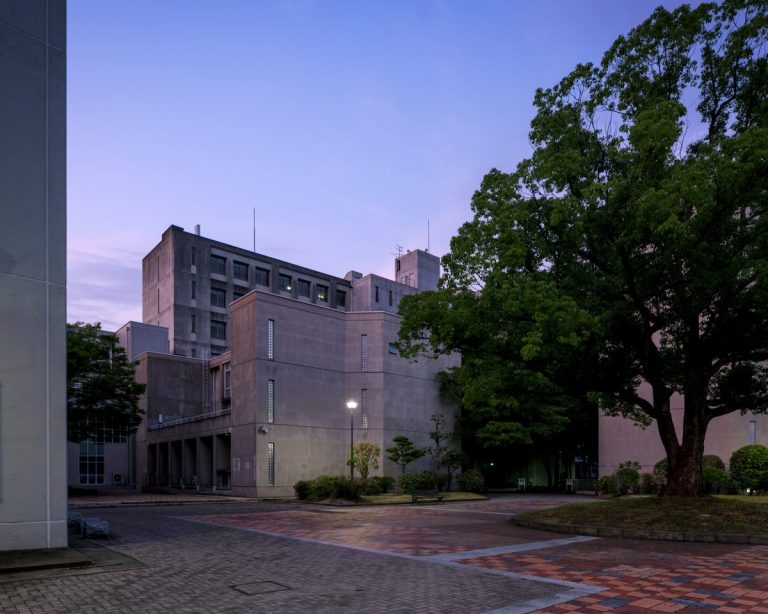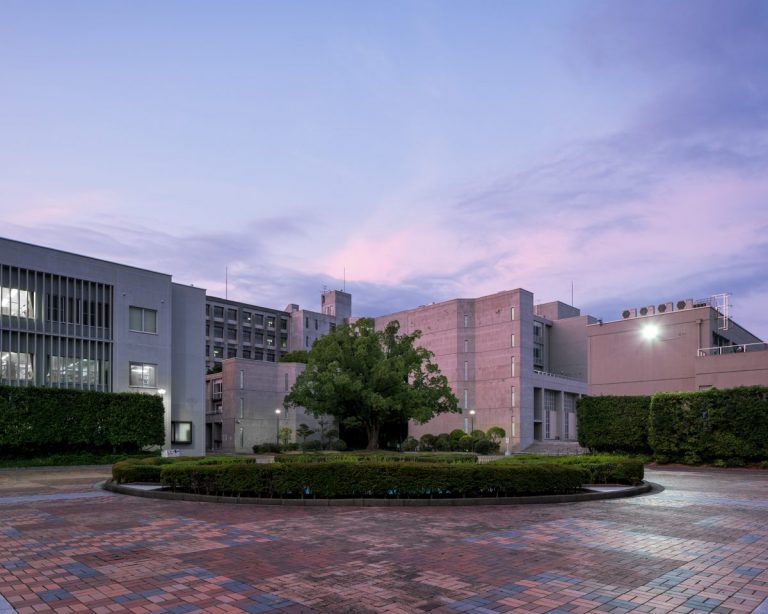Nanocellulose×Earth ~ Shaping nanocellulose into vessels~ Experimental Report 2 "Can earth that is mixed with nanocellulose retain water?"
September 29th to October 21st, 2019
Kyushu University Faculty of Design, Faculty of Agriculture, and the Kondo Research Group collaborated in 2018 to launch a nanocellulose design project based on the theme of eliminating plastic. We are reporting on an experiment on vessels made using earth and nanocellulose conducted as part of the production of several prototypes in 2019. This project aimed to create a planting vessel never seen before by drawing on the unique ability of nanocellulose to “reinforce earth” and “maintain the water-retention ability of earth”.
You can learn more about the activities of the Nanocellulose x Design Project in 2018 here:
https://www.kidnext.design.kyushu-u.ac.jp/projects/807?lang=ja
Experimental Report 2 “Can earth that is mixed with nanocellulose retain water?”
Following Experimental Report 1 “Can earth be reinforced using nanocellulose?” in our goal to create vessels from nanocellulose and earth, we have performed the following experimental procedures to determine whether “earth that is mixed with nanocellulose can retain water.”
Experimental Method
1- Preparing the earth specimens (with different combinations of water, nanocellulose, and bond)
2- Planting plants in the earth specimens and letting the earth dry naturally
3- Determining if the plants survive
1- Preparing the earth specimens
Soil for ornamental plants, peat moss, and vermiculite were mixed well to create earth specimens that are suited for the growth of plants. 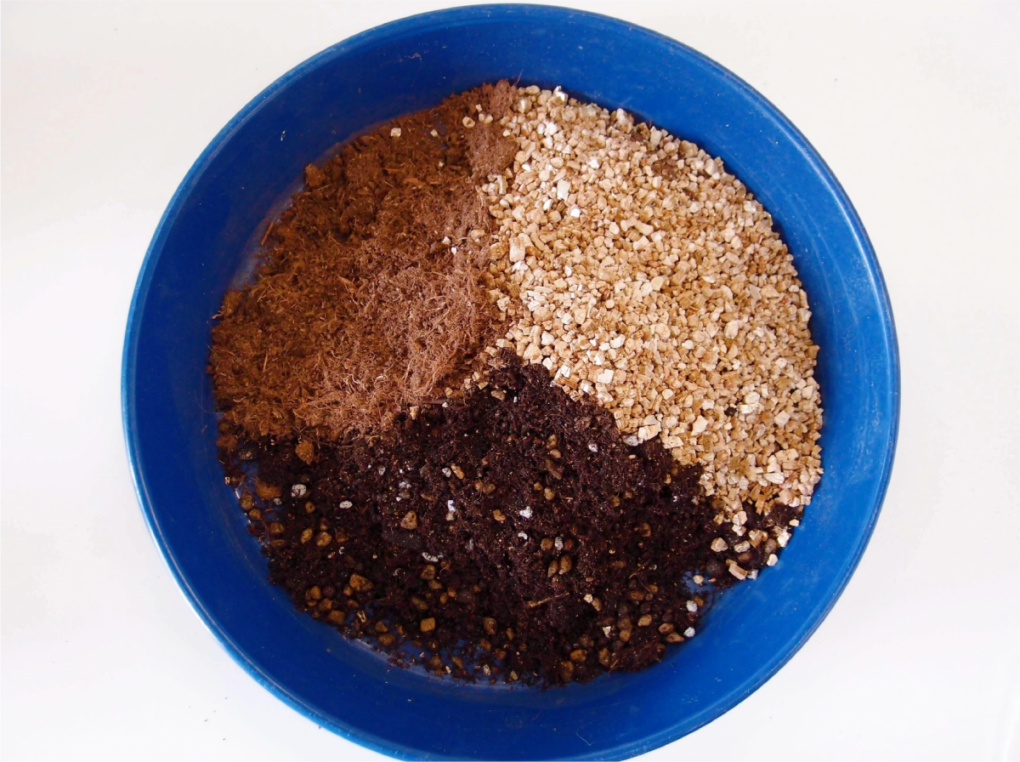
To reinforce the earth, the 4 types of solutions tested in Experiment 1 were mixed into the earth: (1) water only, (2) nanocellulose + water, (3) bond + water, (4) bond + nanocellulose + water.
※The bond used in this step is a type that is normally used for wallpaper during construction works, and its only components are polyvinyl acetate (41%) and water (59%).
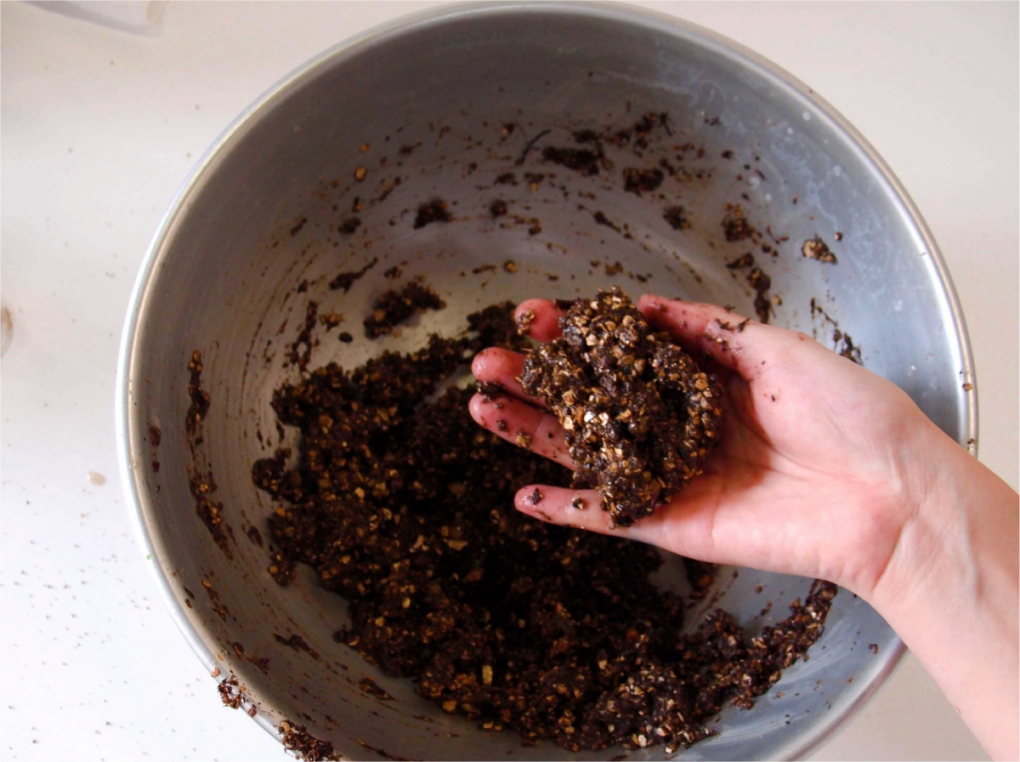
▲The appearance of the earth mixed with (2) nanocellulose + water. No water remains in the mixing bowl and the earth is sticky like a hamburger patty mixture.
2- Planting plants in the earth specimens and letting the earth dry naturally 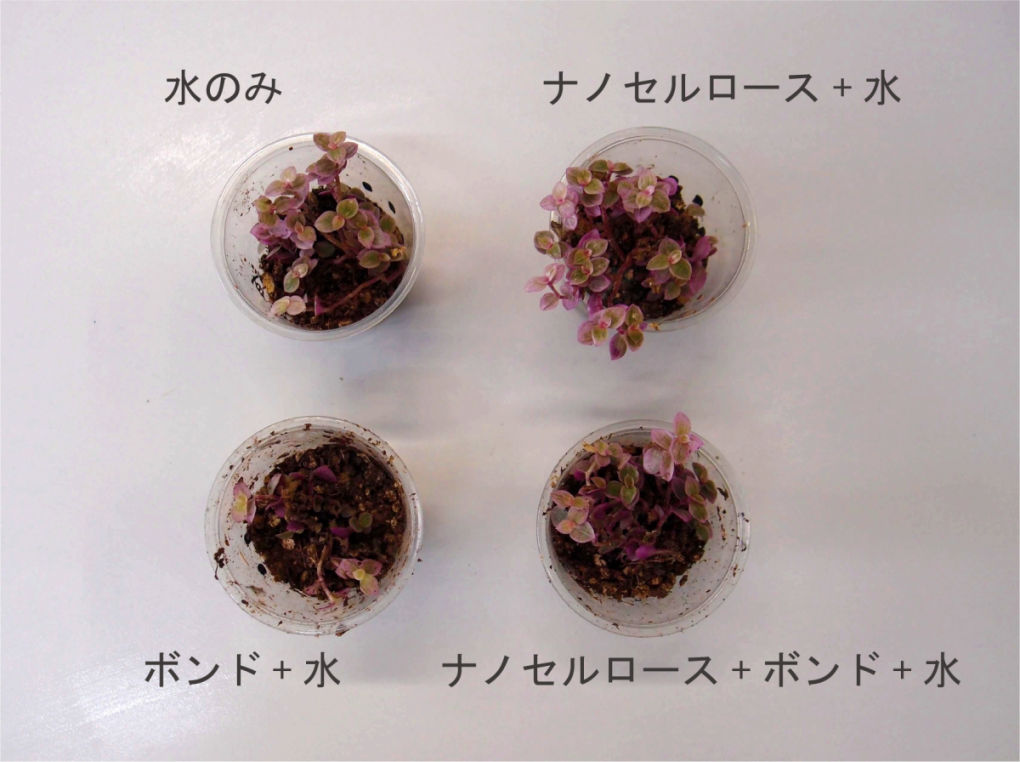
▲Clockwise from the top-left: (1) water only, (2) nanocellulose + water, (4) nanocellulose + bond + water, (3) bond + water
For this experiment, 2 types of plants “Asiatic jasmine” and “white thyme” were planted in the earth and allowed to dry naturally for 14 days.
3- Determining if the plants survive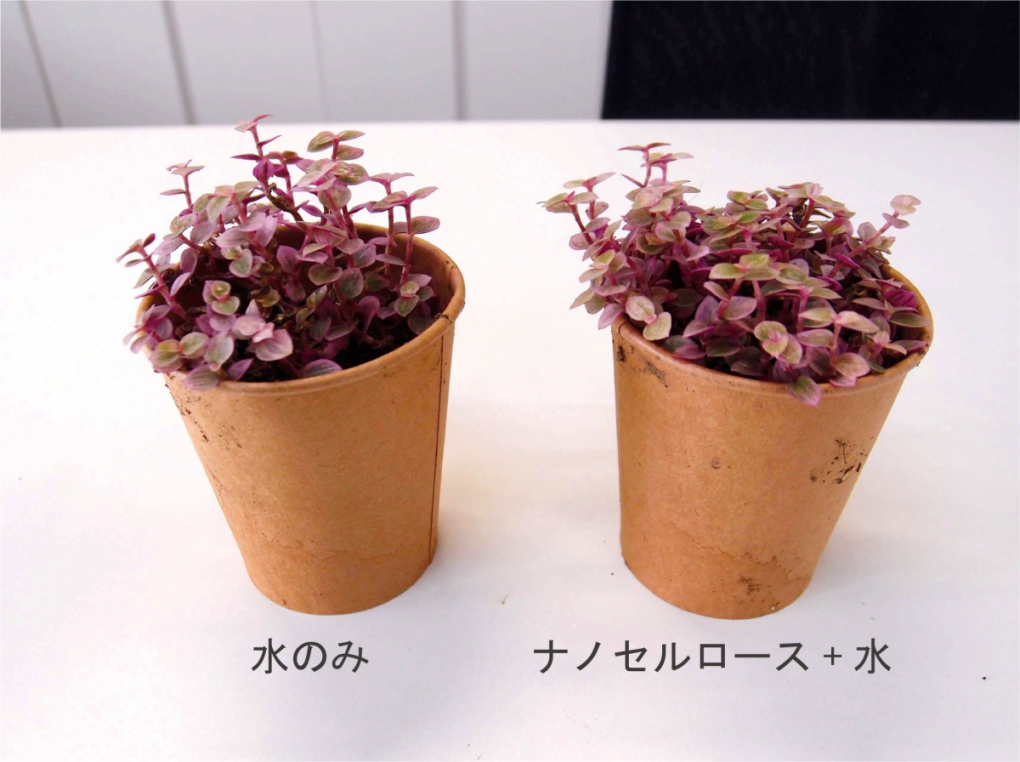
▲Left: (1) water only, Right: (2) nanocellulose + water. There was no significant difference between the two specimens.
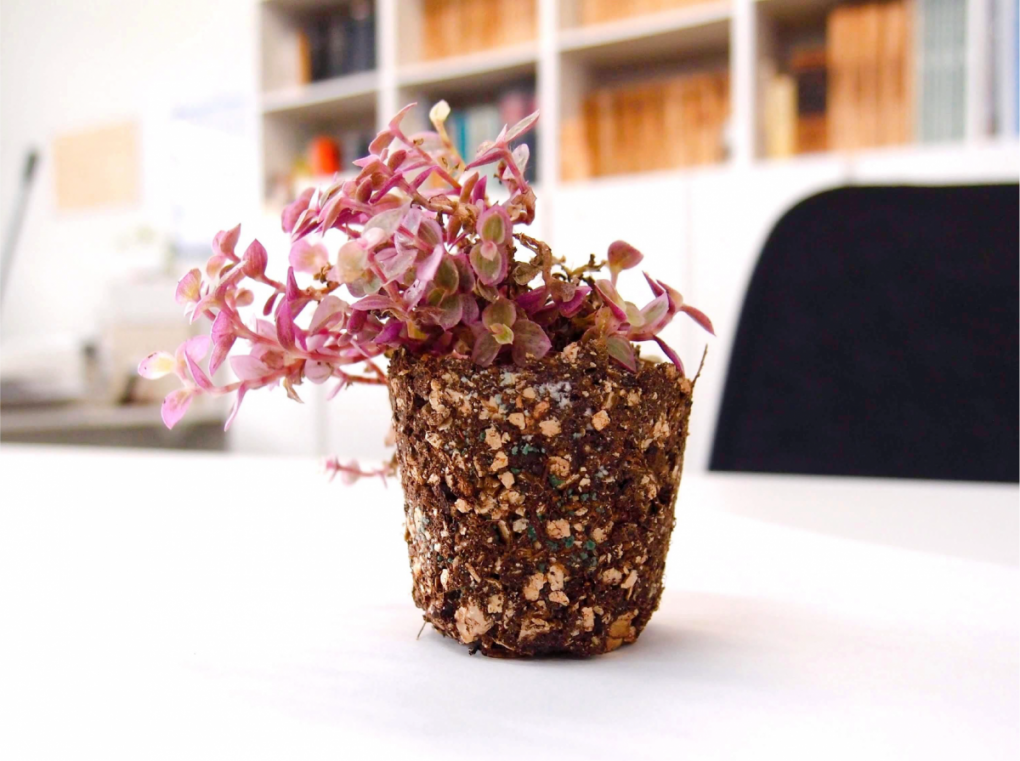 When removed from the cup, it was observed that the earth with (2) nanocellulose + water had firmed up.
When removed from the cup, it was observed that the earth with (2) nanocellulose + water had firmed up.
We had predicted that the earth with (4) bond + nanocellulose + water would firm up, but it actually fell apart as can be seen in the photo below.
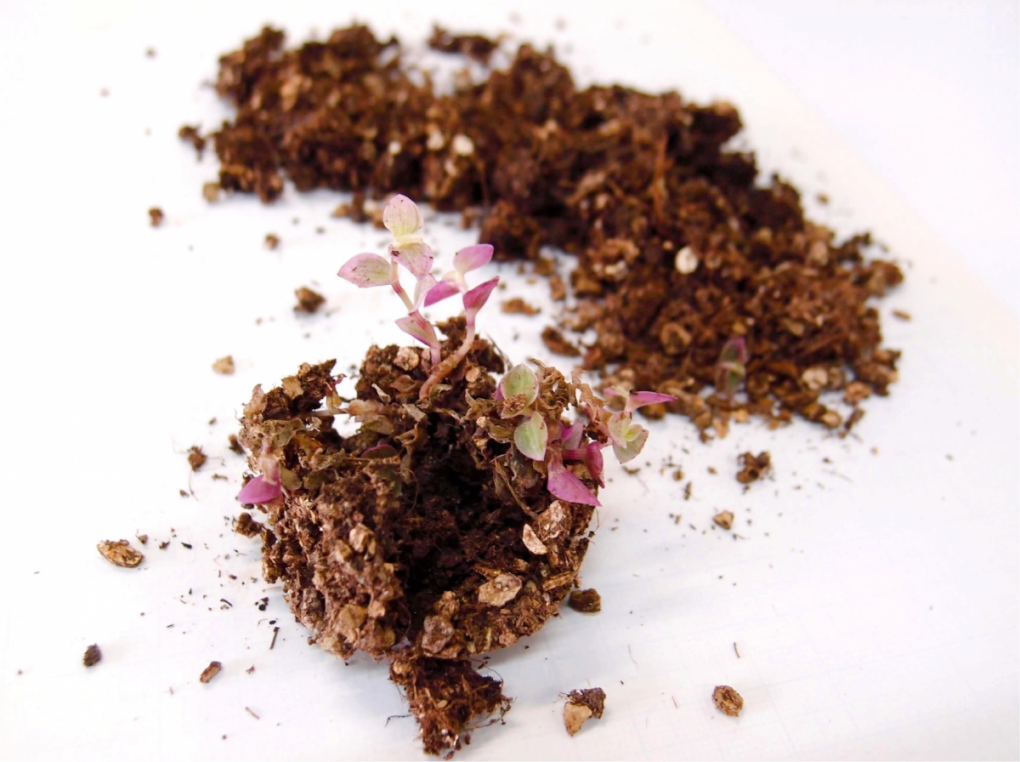
Plants in earth mixed with aqueous solutions (3) and (4) which contain bond did not survive. We believe the plants are vulnerable to an environment that contains polyvinyl acetate. The distinctive odor of bond was present when we planted the plants, and it did not dissipate even after the specimens were left to dry for 14 days.
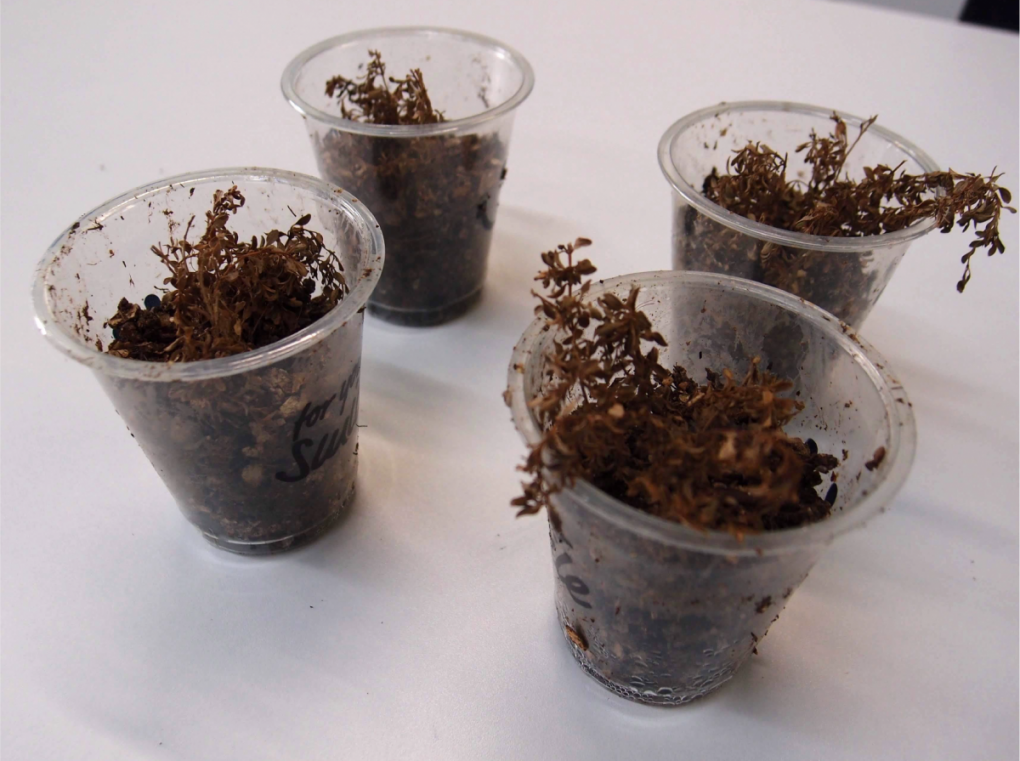 The other plant “white thyme” died in all specimens, either because it could not withstand the stress of being transferred to a different environment or because it could not survive in a dry environment.
The other plant “white thyme” died in all specimens, either because it could not withstand the stress of being transferred to a different environment or because it could not survive in a dry environment.
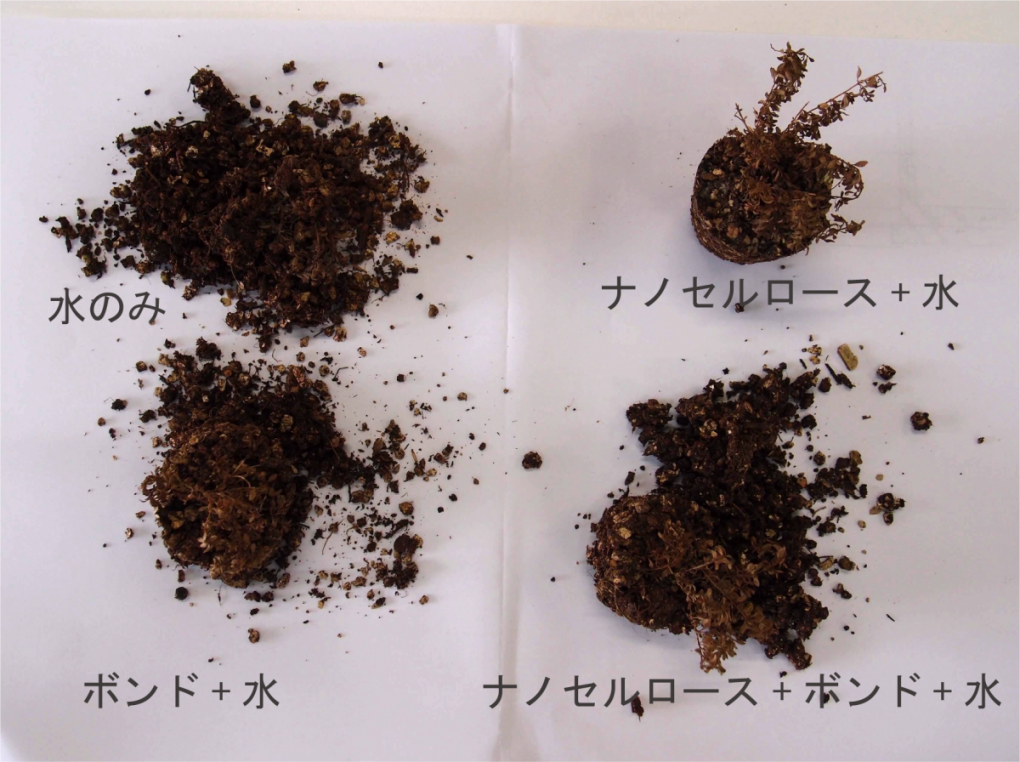 However, in the case of this plant as well, the earth with (2) nanocellulose + water had firmed up beautifully (upper right in the photo).
However, in the case of this plant as well, the earth with (2) nanocellulose + water had firmed up beautifully (upper right in the photo).
Surprisingly, in both cases of “Asiatic jasmine” and “white thyme,” we found a lot of mold in the earth with (2) nanocellulose + water! We suspect that this might be a result of the water-retention ability of nanocellulose. At the same time, no mold was found in the earth mixed with bond or the earth mixed with water only.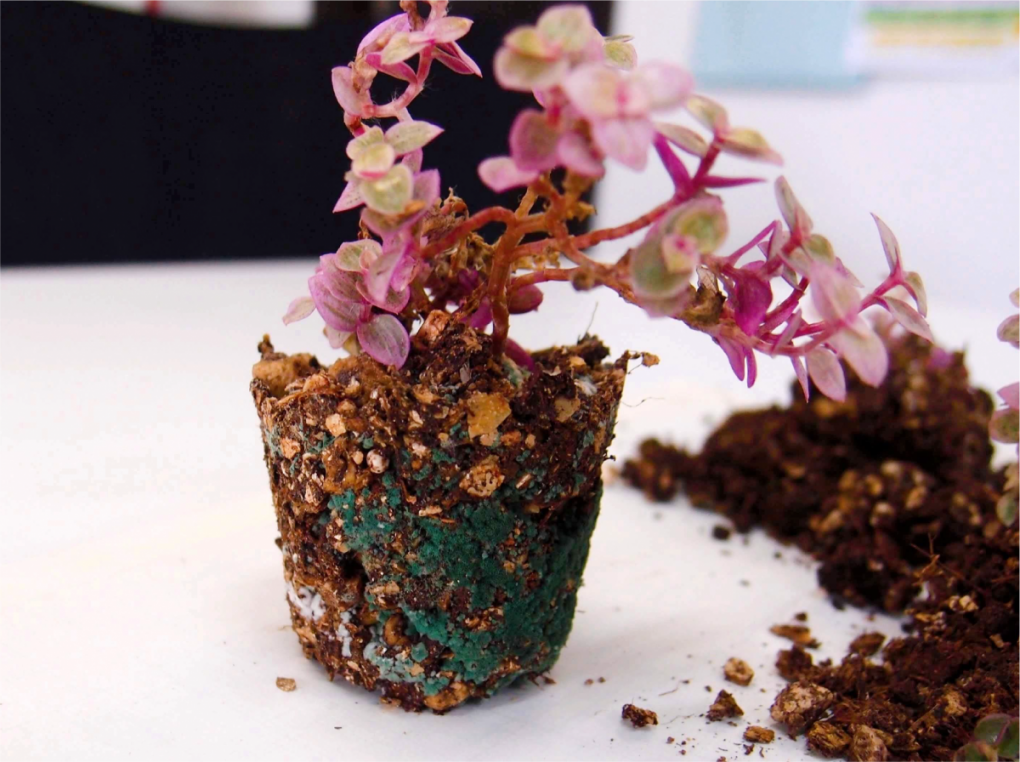
Summary of the experiment “Can earth that is mixed with nanocellulose retain water?”
・From the experimental results, we did not find a clear difference in the likelihood of survival between plants in earth containing water only and plants in earth containing nanocellulose. It is necessary to repeat the experiment with other plants.
・While we could not determine the water-retention ability of earth mixed with nanocellulose, we found that the presence of nanocellulose helped to firm up the earth.
・Plants are weak to bonds.
・Mold is also weak to bonds but it thrives only in the earth with nanocellulose.
After the experiment, we took the specimen containing (2) nanocellulose + water that had firmed up after the drying process and poured as much water as we could over it but the earth still did not fall apart.
We will continue working on this experiment involving the production of “vessels made from nanocellulose and earth” and we will share any further results that we obtain.
Date
September 29th to October 21st, 2019
Member
- Tetsuo Kondo Faculty of Agriculture, Kyushu University
- Yanfang Zhang Faculty of Design, Kyushu University
- Moe Shimomura Faculty of Design, Kyushu University
- Ayaka Yoshimura
![九州大学イノベーションデザインネクスト[KID NEXT]](https://www.kidnext.design.kyushu-u.ac.jp/wp-content/themes/kidnext/img/logo_header.png)
